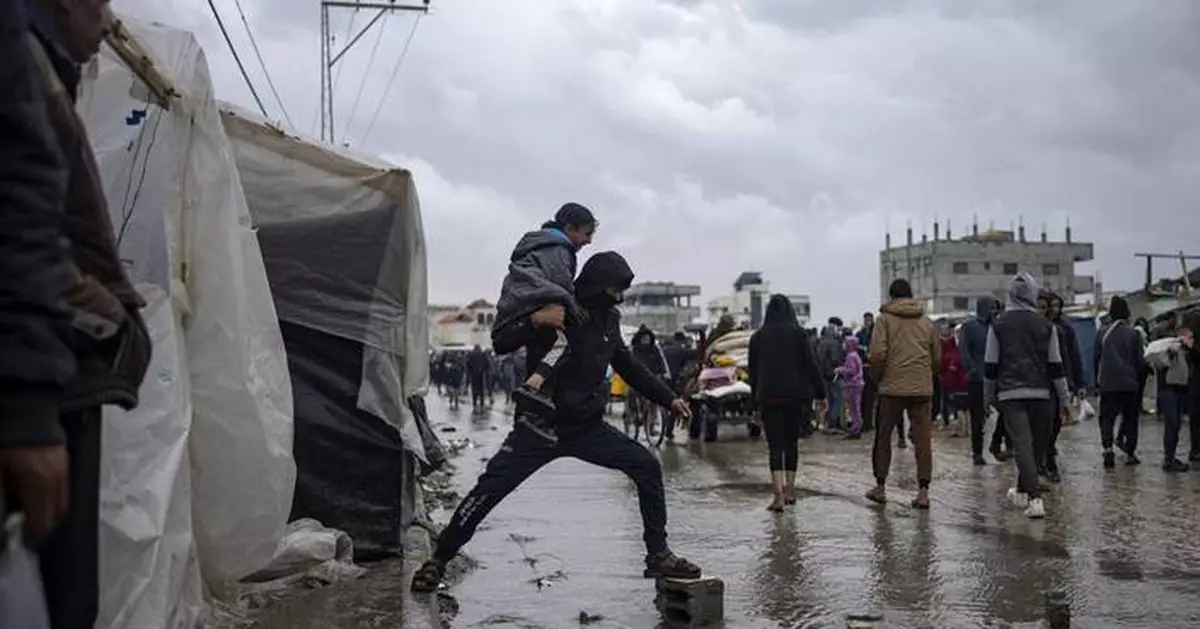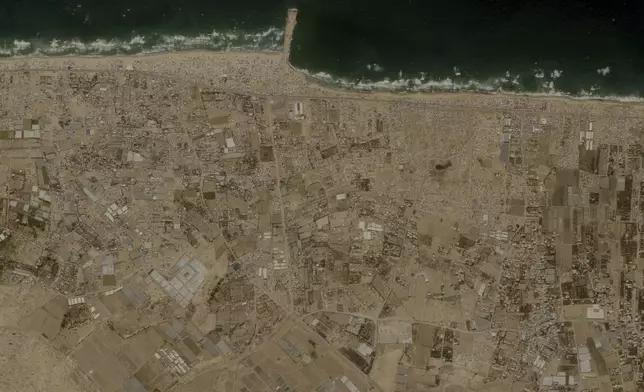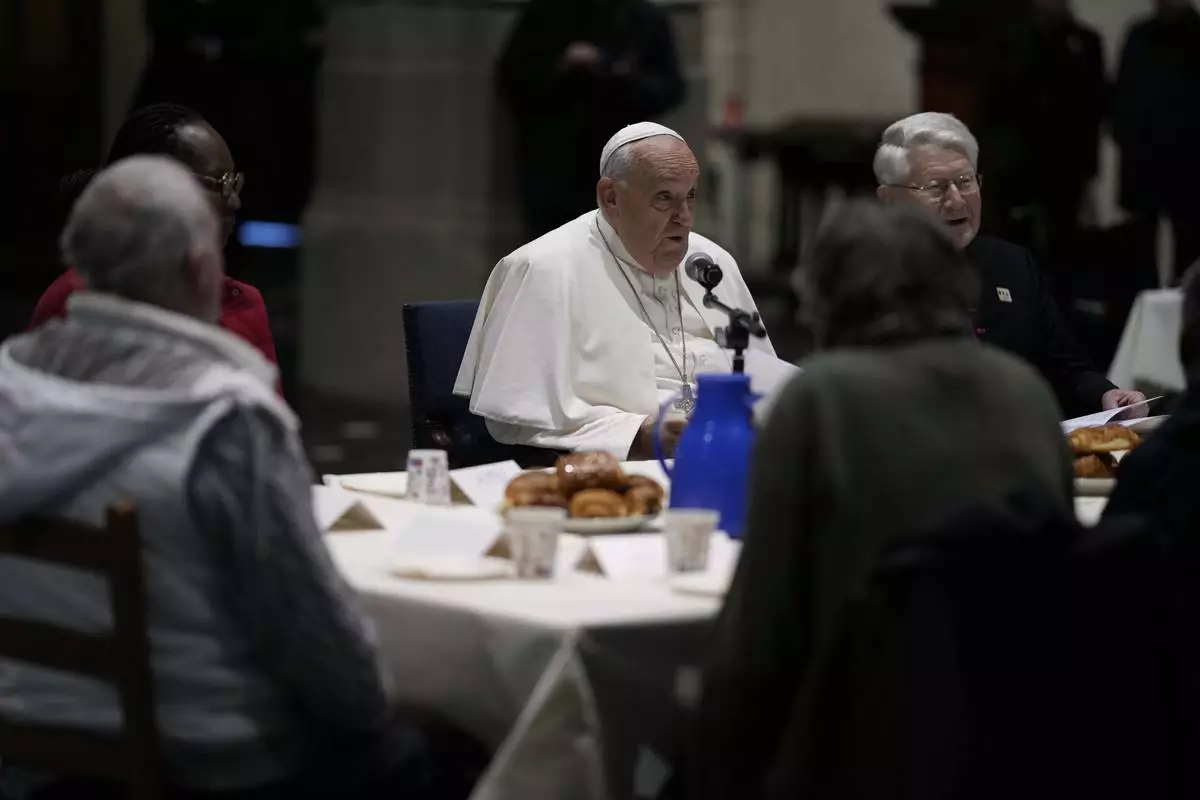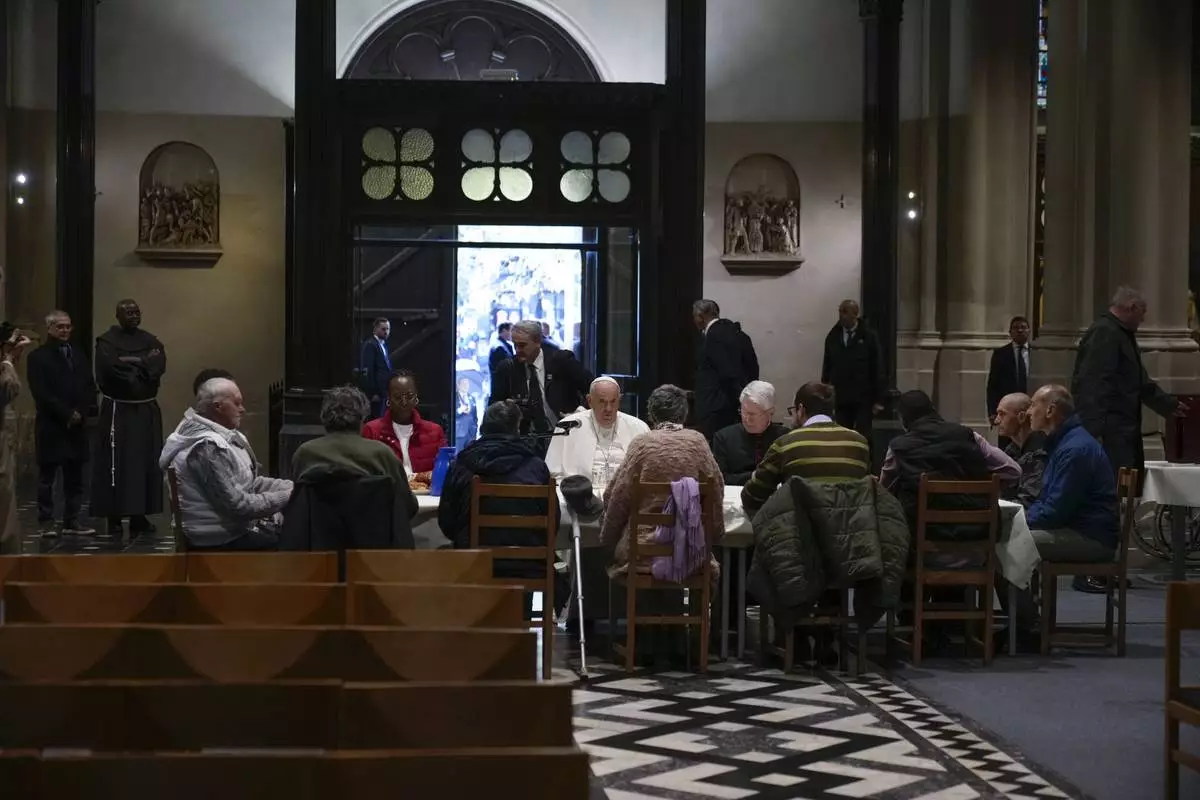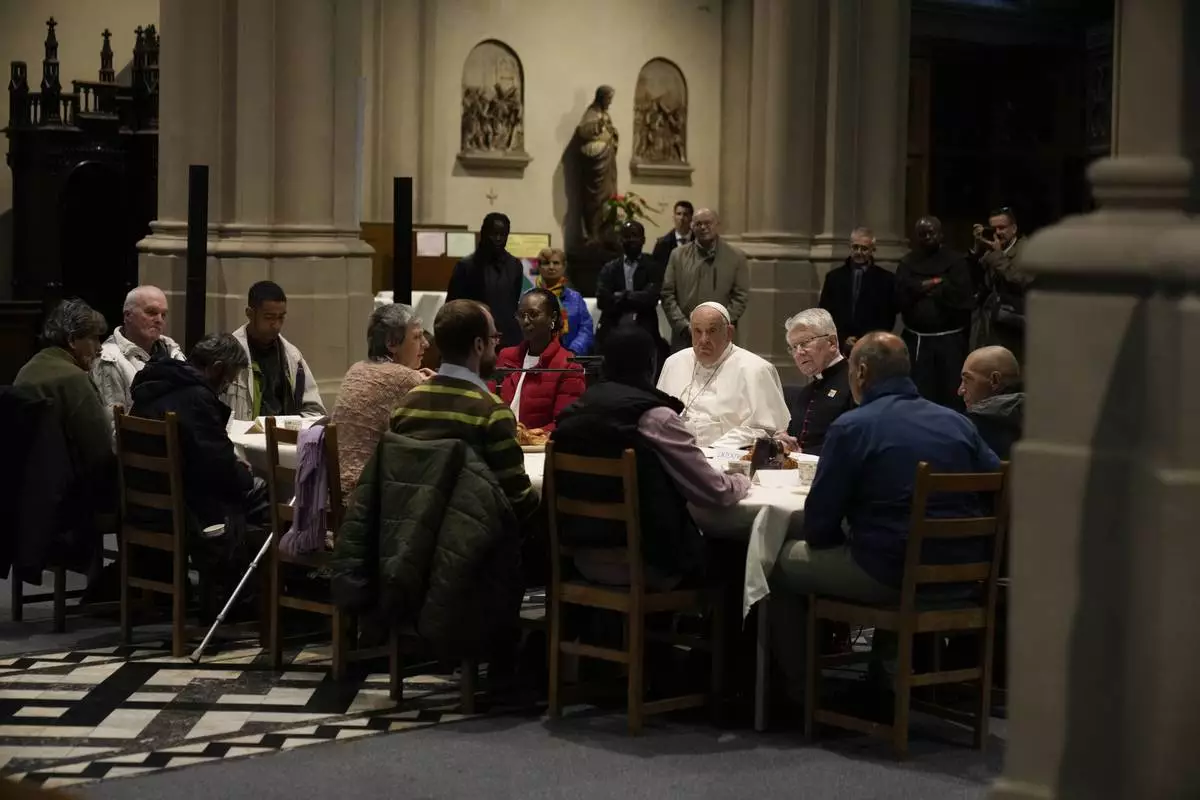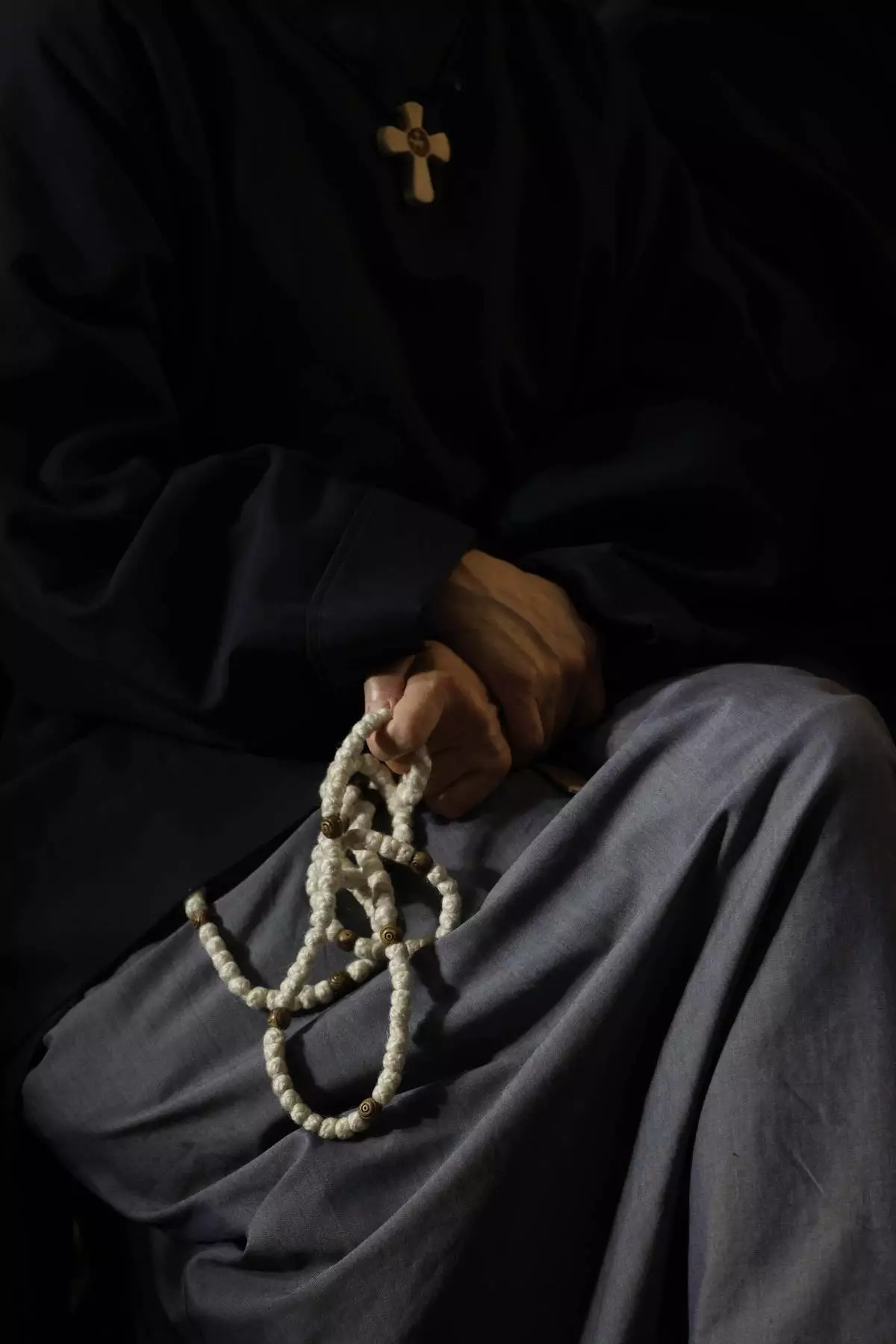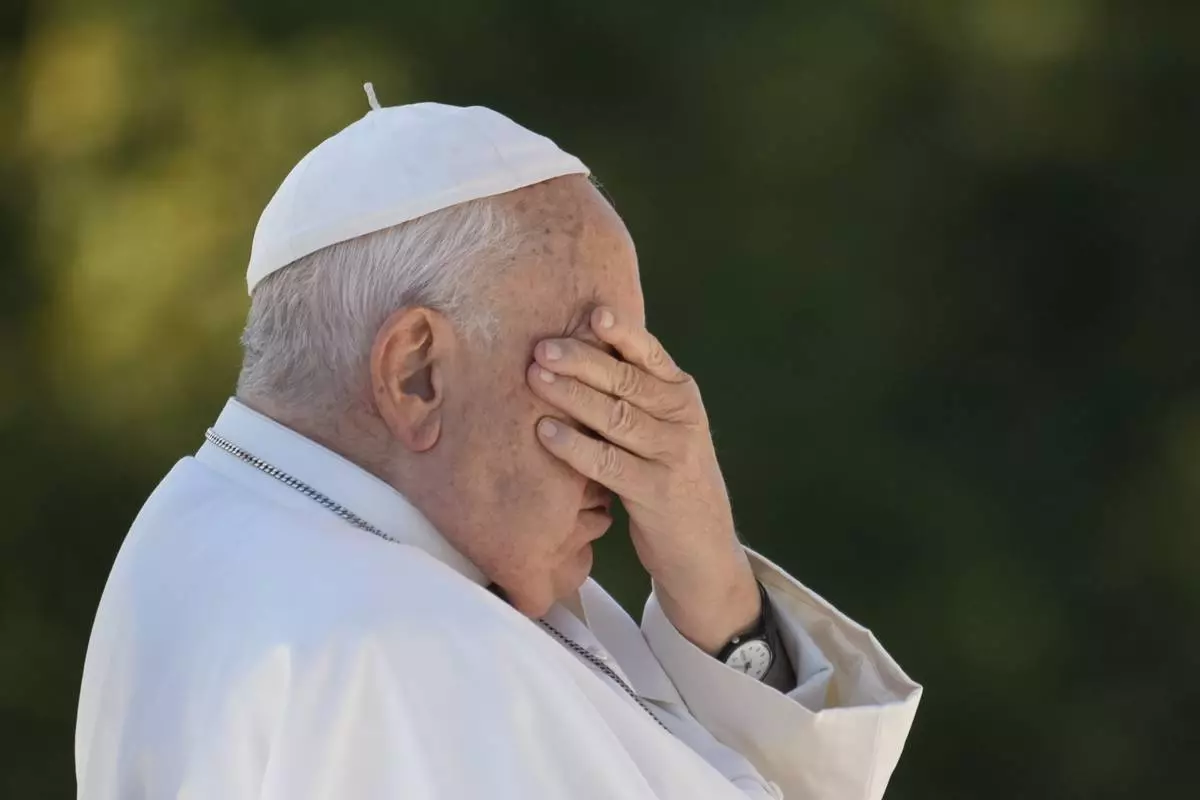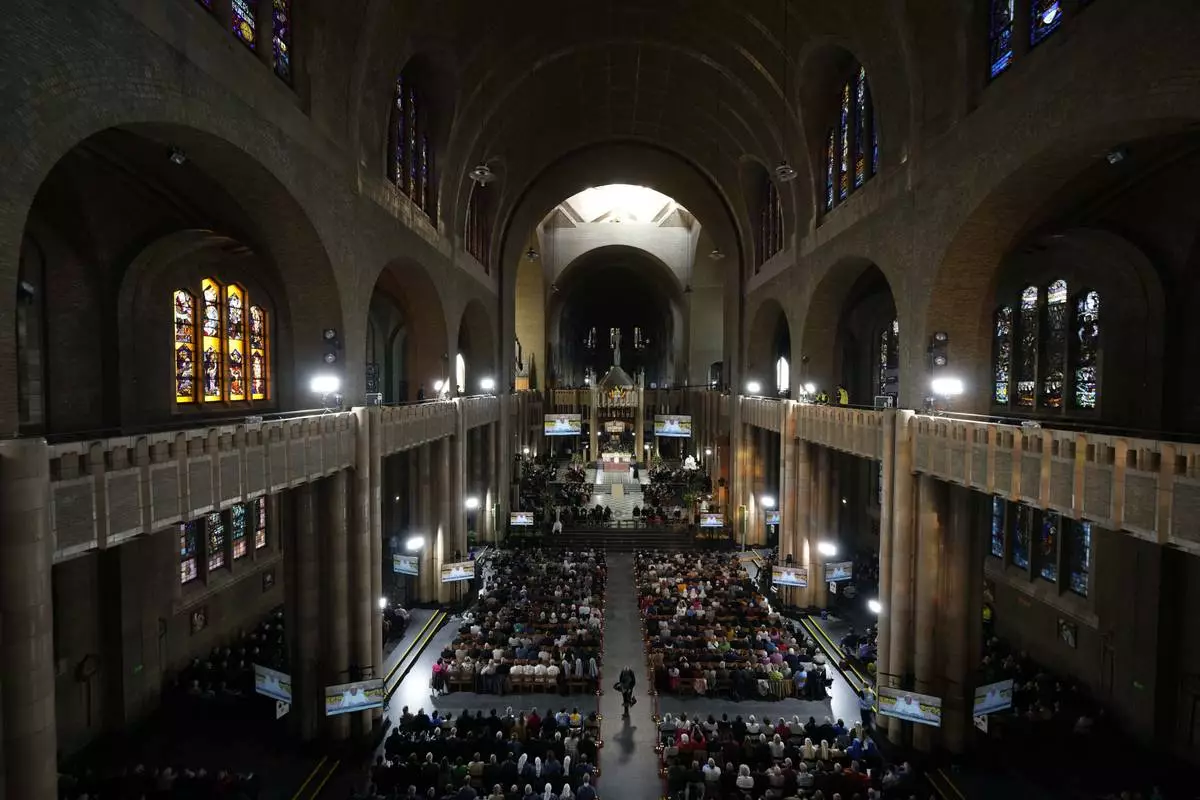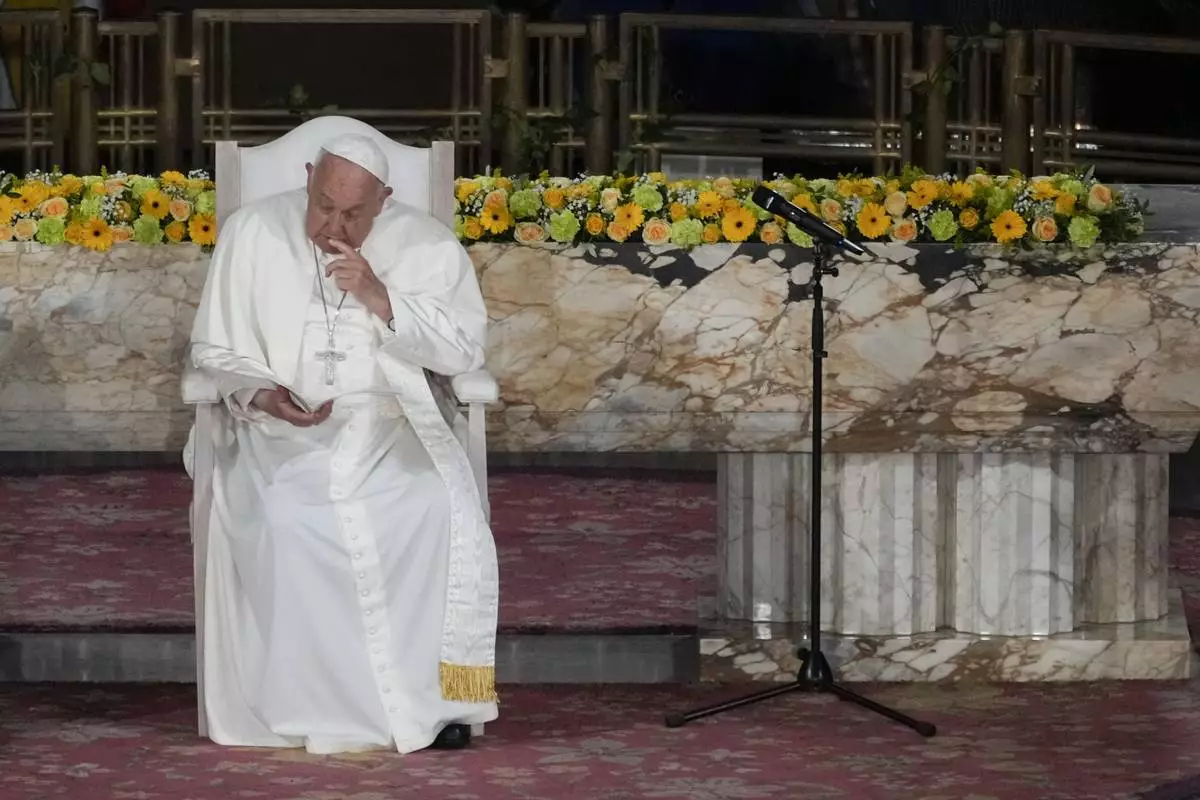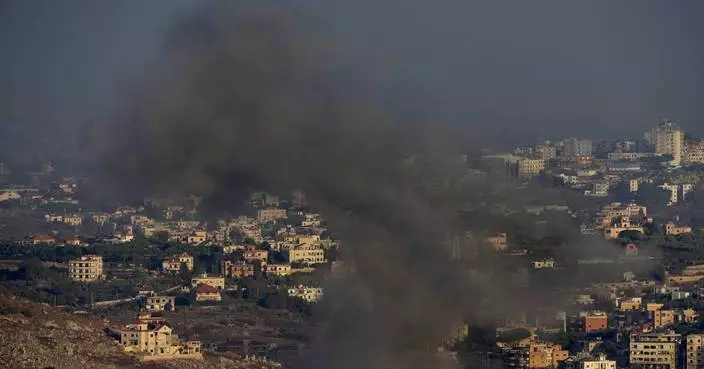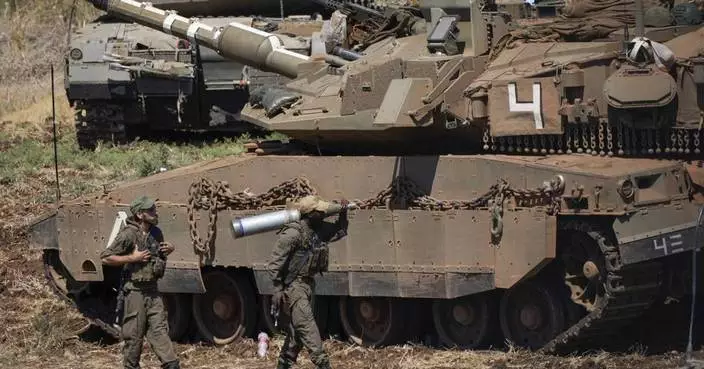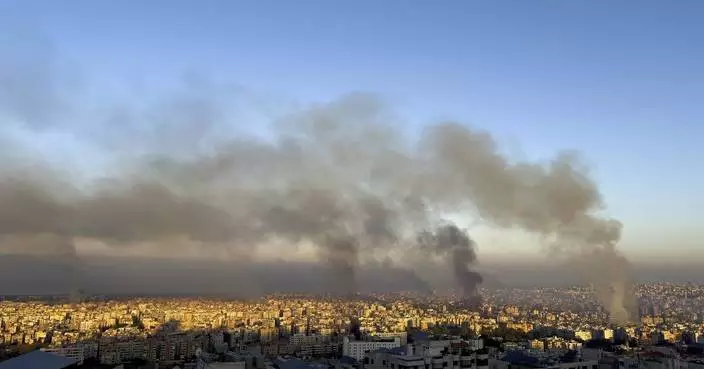DEIR AL-BALAH, Gaza Strip (AP) — The tent camps stretch more than 16 kilometers (10 miles) along Gaza’s coast, filling the beach and spilling into empty lots, fields and streets. Families dig trenches to use as toilets. Fathers search for food and water. Children dig through garbage and wrecked buildings for wood or cardboard for their mothers to burn for cooking.
Over the past three weeks, Israel’s offensive in Rafah has sent nearly a million Palestinians fleeing the southern Gaza city. Most have already been displaced multiple times during Israel’s nearly 8-month-old war in Gaza, which is aimed at destroying the militant Hamas group but has devastated the territory and caused what the United Nations says is a near-famine.
The situation has been worsened by a plunge in the amount of food, fuel and other supplies reaching the U.N. and other aid groups to distribute to the population. Palestinians, who relied in part on humanitarian aid even before the war, have largely been on their own to find the basics for survival.
“The situation is tragic. You have 20 people in the tent, with no clean water, no electricity. We have nothing,” said Mohammad Abu Radwan, a schoolteacher with his wife, six children and other extended family.
“I can’t explain what it feels like living through constant displacement, losing your loved ones,” he said. “All of this destroys us mentally.”
Abu Radwan fled Rafah soon after the Israeli assault on the city began on May 6 as bombardment neared the house where he was sheltering. He and three other families paid $1,000 for donkey carts to take them to the outskirts of Khan Younis, about 6 kilometers (3.6 miles) away. It took a day of living outside before they could assemble the materials for a makeshift tent. Next to the tent, they dug a toilet trench, hanging blankets and old clothes around it for privacy.
Families usually have to buy the wood and tarps for their tents, which can run up to $500, not counting ropes, nails and the cost of transporting the material, the humanitarian group Mercy Corps said.
Israeli authorities controlling all entry points into Gaza have been letting greater numbers of private commercial trucks into the territory, the U.N. and aid workers say. More fruits and vegetables are found in markets, and prices on some have fallen, Palestinians say.
Still, most homeless Palestinians can’t afford them. Many in Gaza have not received salaries for months and savings are depleting. Even those who have money in the bank often can’t withdraw it because there is so little physical cash in the territory. Many turn to black market exchanges that charge up to 20% to give cash for transfers from accounts.
Meanwhile, humanitarian convoys with free supplies have fallen to nearly their lowest levels in the war, the U.N. says.
Previously, the U.N. received several hundred trucks a day. That has dropped to an average of 53 trucks a day since May 6, according to the latest figures from the U.N. humanitarian office on Friday. Some 600 trucks a day are needed to stave off starvation, according to USAID.
In the past three weeks, most of the incoming aid has entered through two crossings from Israel in northern Gaza and via a U.S.-built floating pier taking deliveries by sea. But that pier has suspended operations after damage from rough seas, three U.S. officials told The Associated Press on Tuesday.
The two main crossings in the south, Rafah from Egypt and Kerem Shalom from Israel, are either not operating or are largely inaccessible for the U.N. because of fighting nearby. Israel says it has been letting hundreds of trucks through Kerem Shalom. But the U.N. has only been able to collect about 200 of them on the Gaza side over the past three weeks because of Israeli military restrictions, the expanding offensive, Israeli airstrikes and Hamas rocket launches, UNRWA spokesperson Juliette Touma said Tuesday.
Entry of fuel has fallen to about a sixth of what is needed, Touma said. That makes it more difficult to keep hospitals, bakeries, water pumps and aid trucks working.
The American humanitarian group Anera “is having difficulty distributing what we are able to bring in to the people who need it because there’s so little fuel for trucks,” spokesperson Steve Fake said.
Most of those fleeing Rafah poured into a humanitarian zone declared by Israel that is centered on Muwasi, a largely barren strip of coastal land. The zone was expanded north and east to reach the edges of Khan Younis and the central town of Deir al-Balah, both of which have also filled with people.
“As we can see, there is nothing ‘humanitarian’ about these areas,” said Suze van Meegen, head of operations in Gaza for the Norwegian Refugee Council, who is in the Rafah area.
Much of the humanitarian zone has no charity kitchens or food market, and it has no functioning hospitals, only a few field hospitals and even smaller medical tents that can’t handle emergencies. They pass out painkillers and antibiotics if they have them, according to Mercy Corps.
The Muwasi area has no water resources or sewage systems. With human waste deposited near the tents and garbage piling up, many people suffer from gastrointestinal diseases such as hepatitis and diarrhea, as well as skin allergies and lice, Mercy Corps said.
One aid worker who fled Rafah said he was lucky and could afford to rent a house in Deir al-Balah. “You can’t walk” in the town from all the tents, he said, speaking on condition of anonymity because his agency had not authorized him to speak. Many people he sees in the street are yellow with jaundice.
Israel says its offensive in Rafah is vital to its war aim of destroying Hamas in Gaza after the group’s Oct. 7 attack, in which militants killed some 1,200 people and abducted around 250 others from southern Israel. Israel’s campaign in Gaza triggered by the attack has killed some 36,000 people, according to Gaza’s Health Ministry.
Aid groups warned for months that an attack on Rafah will worsen Gaza’s humanitarian disaster. So far, Israel’s operations have been short of its planned all-out invasion, though fighting has expanded from the eastern parts of Rafah to its central districts.
A strike Sunday hit a tent camp in a western part of Rafah, causing a large fire and killing at least 45 people, according to health officials. Prime Minister Benjamin Netanyahu acknowledged a “tragic mistake” had occurred.
From the exodus the assault has caused, satellite photos taken by Planet Labs PBC on May 24 show dense new tent camps running the length of the coast from just north of Rafah to outside Deir al-Balah. The tents and shelters are densely packed in mazes of corrugated metal and plastic sheets, with blankets and bedsheets draped over sticks for privacy.
Tamer Saeed Abu’l Kheir said he goes out at 6 a.m. every day to find water, usually returning around noon to the tent outside Khan Younis where he and nearly two dozen relatives live. His three children, aged 4 to 10, are always sick, but he said he has to send them to collect wood for the cooking fire.
He worries they’ll come across unexploded bombs in the wrecked houses.
His aging father has trouble moving and uses the bathroom in a bucket, and Abu’l Kheir has to regularly pay to transport him to the nearest hospital for kidney dialysis.
“Wood costs money, water costs money, everything costs money,” said his wife, Leena Abu’l Kheir. She broke down in sobs. “I’m afraid I’ll wake up one day and I’ve lost my children, my mother, my husband, my family.”
Magdy and Keath reported from Cairo. Associated Press writers Sarah El Deeb in Beirut, Fatma Khaled in Cairo, Tara Copp in Washington and Mohammed Jahjouh in Muwasi, Gaza Strip, contributed to this report.
Follow AP's war coverage at https://apnews.com/hub/israel-hamas-war
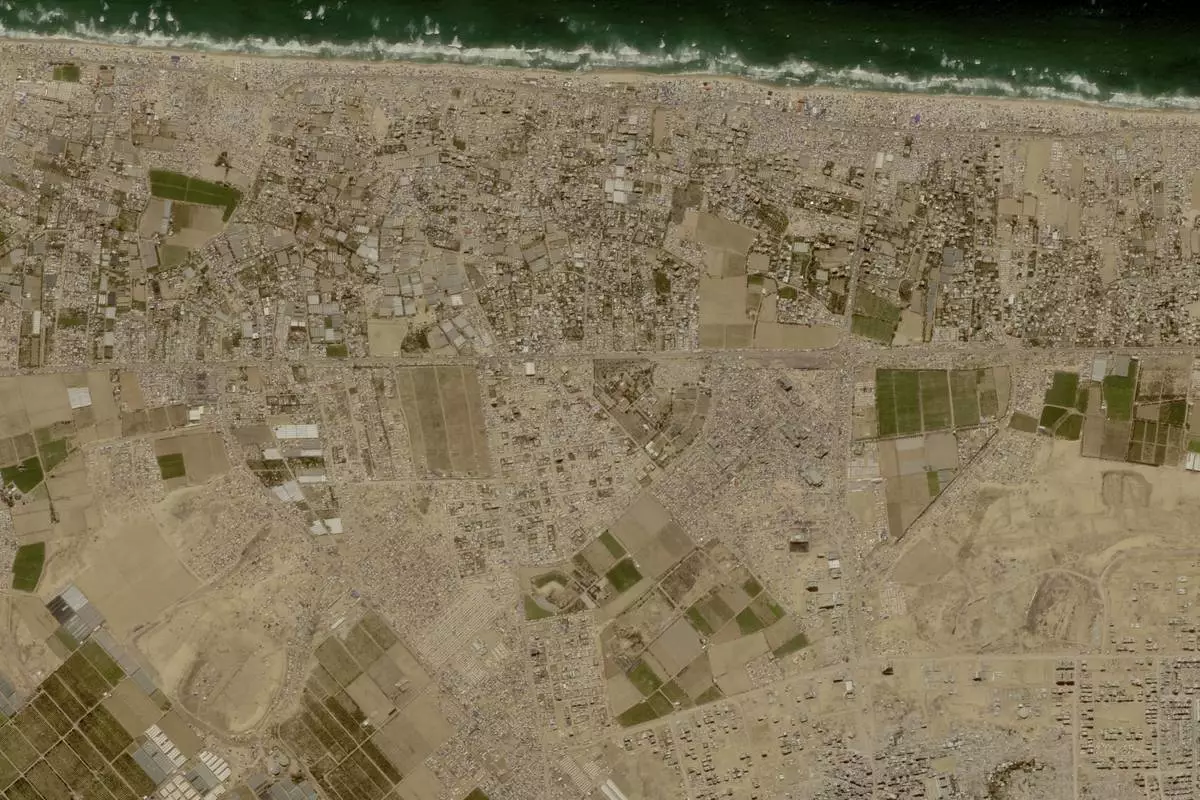
This image provided by Planet Labs PBC shows tent camps line the beach and fill empty lots outside the central Gaza city of Khan Younis, Friday, May 24, 2024, housing Palestinians who fled Israel's offensive in Rafah the past three weeks. (Planet Labs PBC via AP)
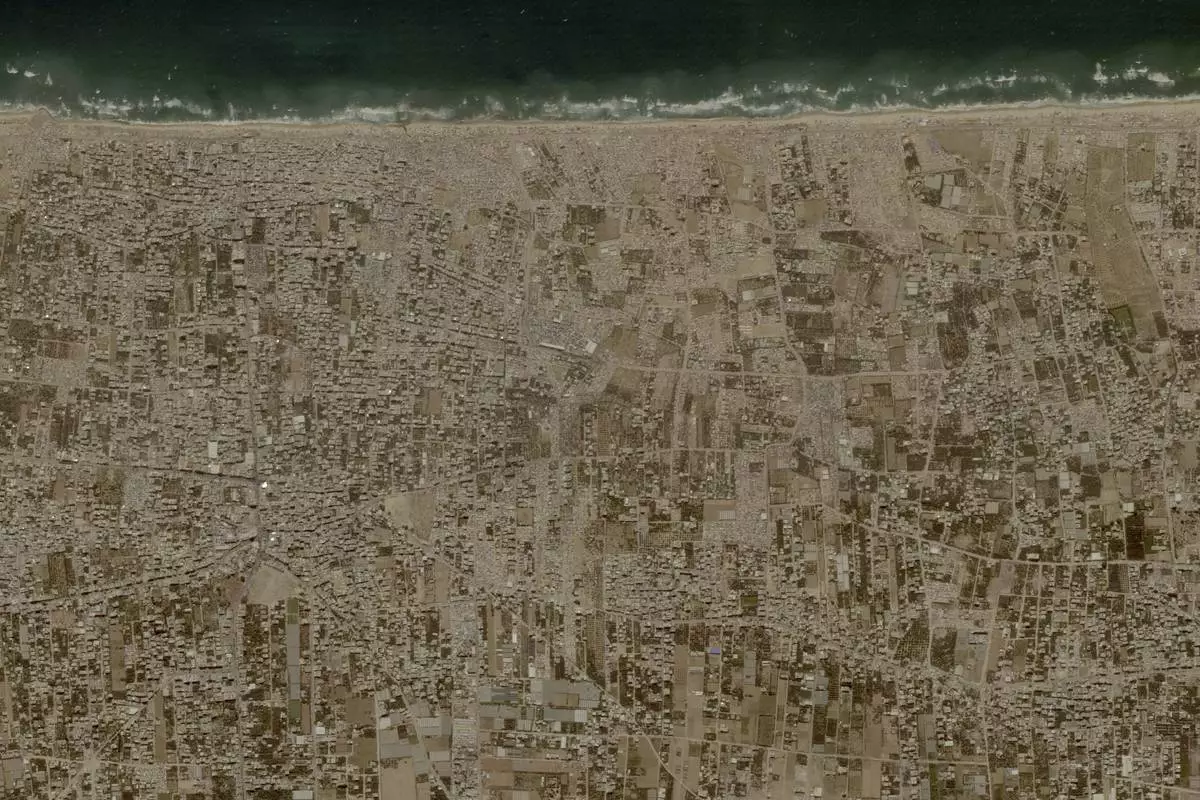
This image provided by Planet Labs PBC shows tent camps line the beach and fill empty lots outside the central Gaza city of Deir al-Balah, Friday, May 24, 2024, housing Palestinians who fled Israel's offensive in Rafah the past three weeks. (Planet Labs PBC via AP)

This image provided by Planet Labs PBC shows tent camps line the beach and fill empty lots outside the central Gaza city of Deir al-Balah, Friday, May 24, 2024, housing Palestinians who fled Israel's offensive in Rafah the past three weeks. (Planet Labs PBC via AP)
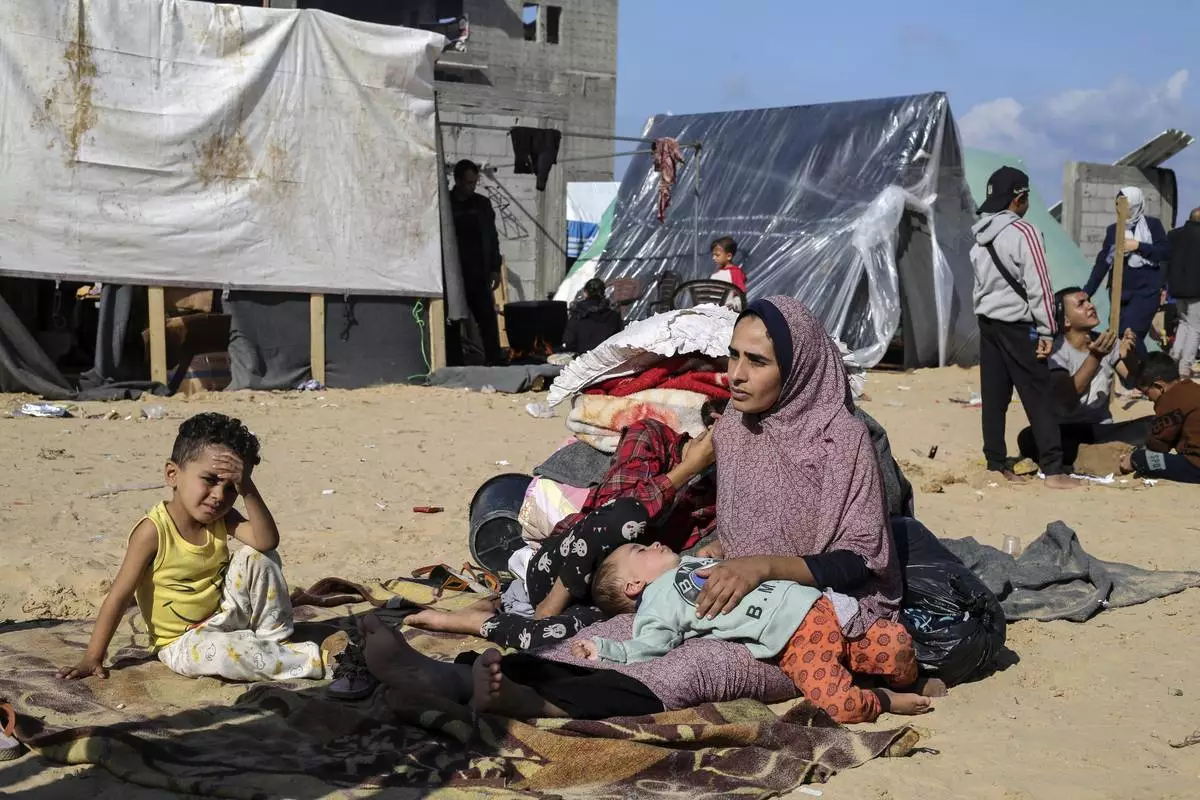
FILE - Palestinians displaced by the Israeli bombardment of the Gaza Strip set up a tent camp in Rafah on Dec. 6, 2023. The tent camps stretch for more than 16 kilometers (10 miles) along Gaza’s coast, filling the beach and sprawling into empty lots, fields and town streets. (AP Photo/Hatem Ali, file)
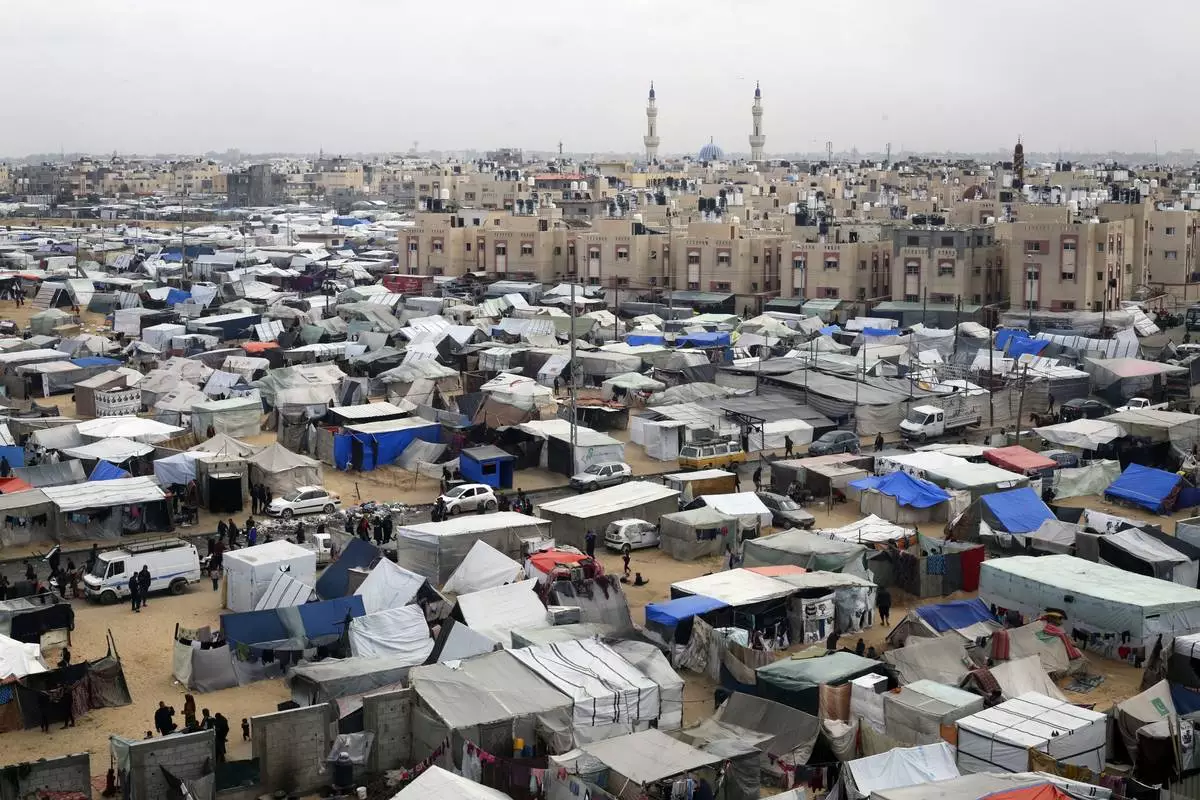
FILE - A tent camp housing Palestinians displaced by the Israeli offensive is seen in Rafah, Gaza Strip, on Feb. 27, 2024. The tent camps stretch for more than 16 kilometers (10 miles) along Gaza’s coast, filling the beach and sprawling into empty lots, fields and town streets. (AP Photo/Hatem Ali, file)
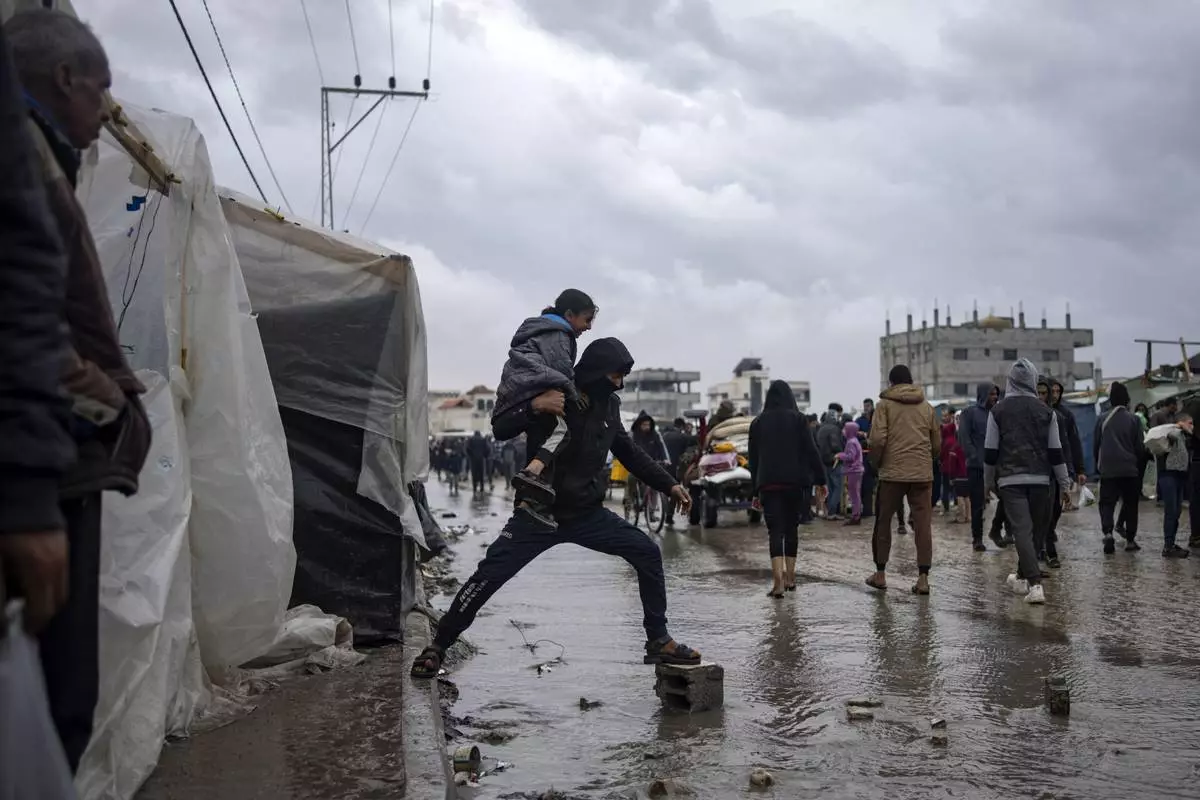
FILE - Palestinians displaced by the Israeli air and ground offensive on the Gaza Strip walk through a makeshift tent camp in Rafah on Jan. 27, 2024. The tent camps stretch for more than 16 kilometers (10 miles) along Gaza’s coast, filling the beach and sprawling into empty lots, fields and town streets. (AP Photo/Fatima Shbair, file)


